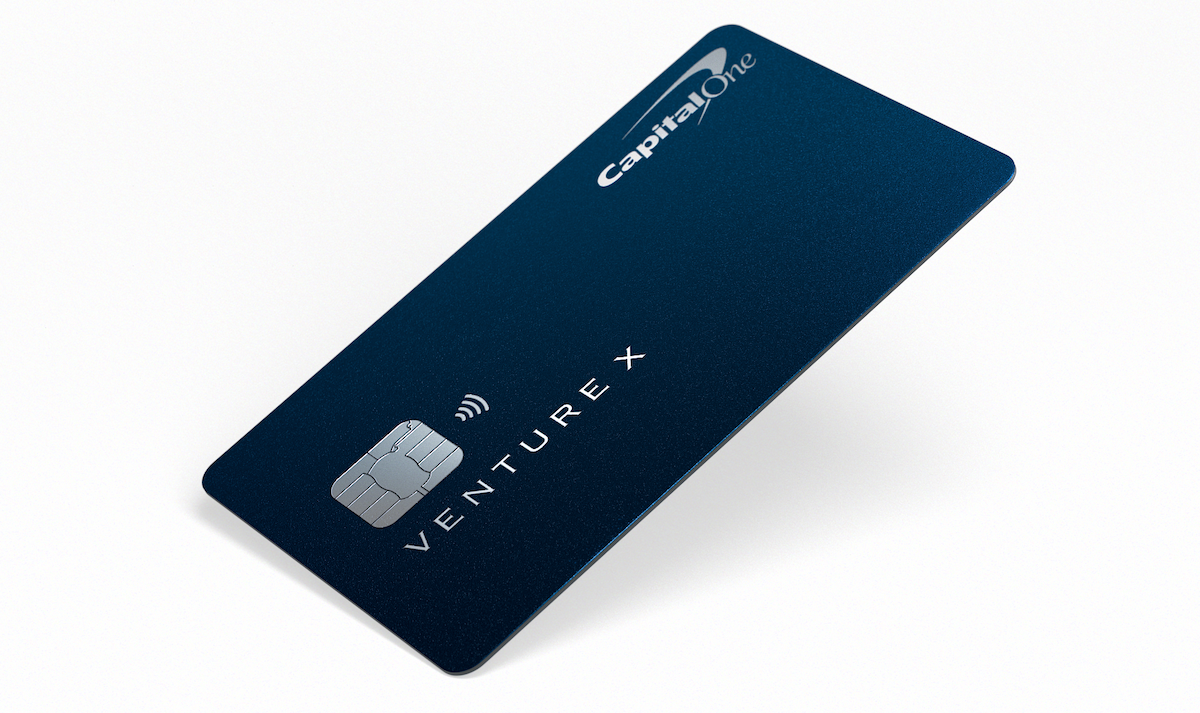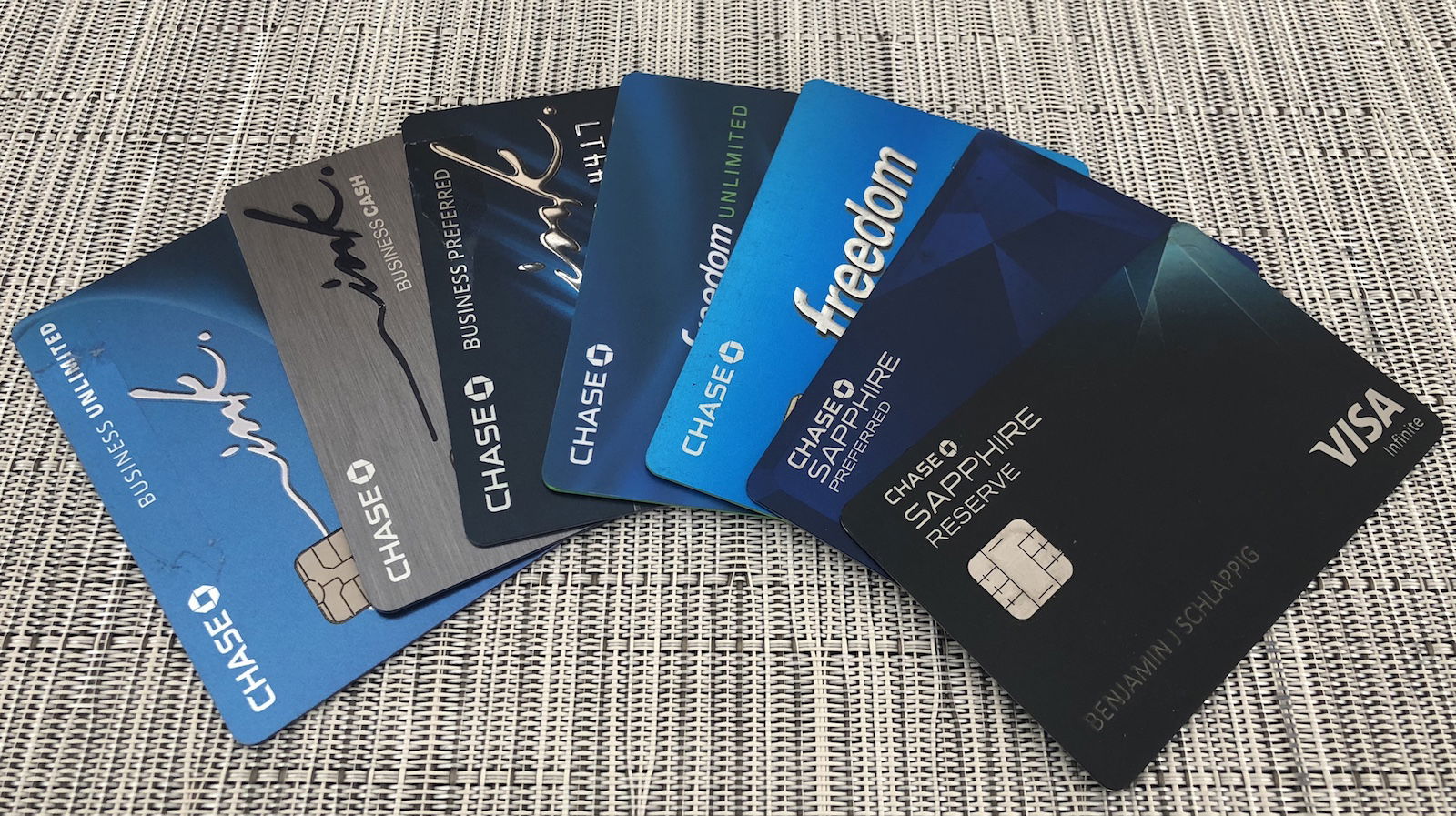The new Capital One Venture X Rewards Credit Card (review) was recently introduced, and it’s probably the biggest new competitor to the uber-popular Chase Sapphire Reserve® Card (review). Since there’s a lot of overlap between these two cards, in this post I wanted to compare the two cards, with the hopes of helping people decide which card makes more sense for them.
Comparing the Venture X & Sapphire Reserve
Both the Capital One Venture X and Chase Sapphire Reserve are incredibly rewarding cards, so let’s compare them across a variety of factors — welcome bonuses, approval odds, annual fees, the ability to earn & redeem points, the ability to redeem points, annual credits, lounge access, and more. Let’s get right into…
Welcome bonuses: Venture X vs. Sapphire Reserve
The two cards are currently offering the following welcome bonuses:
- The Capital One Venture X is offering 100,000 Venture miles plus a $200 vacation rental credit after spending $10,000 within six months
- The Chase Sapphire Reserve is offering 50,000 Ultimate Rewards points after spending $4,000 within three months
For context, I value both Capital One miles and Chase Ultimate Rewards points at 1.7 cents each.
Winner: The Capital One Venture X wins, and is offering a significantly better welcome bonus, despite the higher spending requirement.

Approval odds: Venture X vs. Sapphire Reserve
Both cards have rules when it comes to being approved:
Winner: It depends on your exact situation, especially given that Capital One can be strange about approvals sometimes, but I’d say a lot more people are eligible for the Capital One Venture X than the Chase Sapphire Reserve.

Annual fees: Venture X vs. Sapphire Reserve
When it comes to the annual fees of the two credit cards, there is a significant difference, both for the primary cardmember and for authorized users:
Winner: The Capital One Venture X wins by a long shot here, as the annual fee is much lower, and you can add authorized users at no extra cost.

Earning points: Venture X vs. Sapphire Reserve
The two cards have different rewards structures, with one card being great for everyday spending, and the other card being great for popular bonus categories:
- The Capital One Venture X earns 2x Venture miles on all purchases; you can also earn 10x miles for hotels and rentals cars booked through Capital One Travel, and 5x miles for flights booked through Capital One Travel
- The Chase Sapphire Reserve earns 3x Ultimate Rewards points on dining and travel, and 1x Ultimate Rewards points on other purchases; you can also earn 10x points for hotels and rental cars booked through Chase Travel, and 5x points for flights booked through Chase Travel
Winner: I’d say this is a “your mileage may vary” situation, so I don’t think there’s an obvious winner. If over half of your spending is on dining and travel, you’ll come out ahead with the Chase Sapphire Reserve, while if over half of your spending is in other categories, you’ll come out ahead with the Capital One Venture X. This doesn’t factor in the ability to build a portfolio of cards, which I’ll address below.

Redeeming points: Venture X vs. Sapphire Reserve
As I mentioned above, I value both Capital One miles and Chase Ultimate Rewards points at 1.7 cents each, but I wanted to expand a bit on redemption opportunities.
Points earned on the Capital One Venture X can be redeemed in the following ways:
- They can be redeemed for one cent each towards the cost of a travel purchase; what’s cool is that you can book travel however you’d like, and then retroactively reimburse yourself for those purchases with the Purchase Eraser feature
- They can be transferred to Capital One airline and hotel partners, with a vast majority of transfers being at a 1:1 ratio
Capital One partners include the following (along with transfer ratios and times):
|
Capital One Transfer Partner |
Transfer Ratio |
Transfer Time |
|---|---|---|
|
Accor Live Limitless (ALL) |
1000 : 500 |
~ 24 to 48 hours |
|
Aeromexico Club Premier |
1000 : 1000 |
Instant |
|
Air Canada Aeroplan |
1000 : 1000 |
Instant |
|
Air France-KLM Flying Blue |
1000 : 1000 |
Instant |
|
Avianca LifeMiles |
1000 : 1000 |
Instant |
|
British Airways Executive Club |
1000 : 1000 |
Instant |
|
Cathay Pacific Asia Miles |
1000 : 1000 |
~ 3 to 5 days |
|
Emirates Skywards |
1000 : 1000 |
Instant |
|
Etihad Guest |
1000 : 1000 |
~ 12 to 24 hours |
|
EVA Air Infinity MileageLands |
1000 : 750 |
~ 24 to 48 hours |
|
Finnair Plus |
1000 : 1000 |
Instant |
|
Qantas Frequent Flyer |
1000 : 1000 |
~ 24 to 48 hours |
|
Singapore Airlines KrisFlyer |
1000 : 1000 |
~ 24 to 48 hours |
|
TAP Air Portugal Miles&Go |
1000 : 1000 |
Instant |
|
Turkish Airlines Miles&Smiles |
1000 : 1000 |
~ 24 to 48 hours |
|
Wyndham Rewards |
1000 : 1000 |
Instant |
Points earned on the Chase Sapphire Reserve can be redeemed in the following ways:
- They can be redeemed for 1.5 cents each towards the cost of a travel purchase through Chase Travel; this gets you a higher per-point value, but you are restricted to booking through the travel portal
- They can be transferred to Ultimate Rewards airline and hotel partners at a 1:1 ratio
Ultimate Rewards partners include the following (along with transfer ratios and times):
|
Ultimate Rewards Transfer Partner |
Transfer Ratio |
Transfer Time |
|---|---|---|
|
Aer Lingus Aer Club |
1000 : 1000 |
Instant |
|
Air Canada Aeroplan |
1000 : 1000 |
Instant |
|
Air France KLM FlyingBlue |
1000 : 1000 |
Instant |
|
British Airways Executive Club |
1000 : 1000 |
Instant |
|
Emirates Skywards |
1000 : 1000 |
Instant |
|
Iberia Plus |
1000 : 1000 |
Instant |
|
JetBlue TrueBlue |
1000 : 1000 |
Instant |
|
Singapore Airlines KrisFlyer |
1000 : 1000 |
~ 1 to 7 days |
|
Southwest Rapid Rewards |
1000 : 1000 |
Instant |
|
United MileagePlus |
1000 : 1000 |
Instant |
|
Virgin Atlantic Flying Club |
1000 : 1000 |
Instant |
|
IHG Rewards Club |
1000 : 1000 |
Instant |
|
Marriott Bonvoy |
1000 : 1000 |
~ 1 to 2 days |
|
World of Hyatt |
1000 : 1000 |
Instant |
Winner: I’d say the Chase Sapphire Reserve has the slight edge here. I value the two points currencies the same, but if I had to choose, I think I slightly prefer the Chase Ultimate Rewards transfer partners (thanks to World of Hyatt), and the “cash-out” value when redeeming points towards travel is higher (though with the requirement to book through the portal, which is restrictive).

Annual credits & ongoing perks: Venture X vs. Sapphire Reserve
Both cards offer significant annual credits that largely help offset the annual fee:
- The Capital One Venture X offers a $300 annual credit, which can only be applied towards purchases on Capital One Travel, including of flights, hotels, and rental cars; on top of that, the card offers 10,000 bonus anniversary Venture miles every year, redeemable for at least $100 worth of travel (or they can be transfered to airline partners)
- The Chase Sapphire Reserve offers a $300 annual travel credit, which has incredible flexibility, since it can automatically be applied to any travel purchase you put on the card, with no need to use Chase’s portal
The way I view it, the Sapphire Reserve really only “costs” you $250 per year after subtracting the $300 credit from the $550 annual fee. Meanwhile I’d argue that the Capital One Venture X “costs” you nothing, really, after factoring in the minimum of $400 in value you’ll get from the annual travel credit and 10,000 bonus miles.
Winner: While the Chase Sapphire Reserve’s $300 credit is more flexible, the Capital One Venture X wins for offering both a $300 credit and 10,000 bonus anniversary miles, which more or less means the card “costs” you almost nothing to hold onto.

Lounge access: Venture X vs. Sapphire Reserve
One of the major reasons people consider picking up a premium credit card is for lounge access, and this is an area where both cards are pretty good:
With both cards you can take two guests into Priority Pass lounges with you, you can get credits at Priority Pass restaurants, and both the primary cardmember and authorized users receive these perks.
Winner: The Capital One Venture X wins here. Not only does the card have a lower annual fee, but you can also add authorized users for free (and they get a Priority Pass membership as well), and the card also offers access to Capital One Lounges.

Rental car perks: Venture X vs. Sapphire Reserve
Both cards are Visa Infinite products, which means they come with certain rental car perks, though there’s still a difference:
Winner: The Venture X wins, since it not only offers the standard Visa Infinite perks, but also top tier status with Hertz.

Building a card portfolio: Venture X vs. Sapphire Reserve
It’s important to call out one major competitive advantage of the Chase Sapphire Reserve, which is the ability to create an incredible portfolio of credit cards that helps maximize your rewards. Capital One’s mileage earning cards are all great for everyday spending, but don’t offer many useful bonus categories.
You can pool the points you earn on the Chase Sapphire Reserve with some other awesome Chase cards, most of which don’t have an annual fee:
- The Chase Freedom FlexSM (review) has no annual fee and offers 5x points in rotating quarterly categories, for up to $1,500 of spending per quarter, plus 3x points on dining and drugstores
- The Chase Freedom Unlimited® (review) has no annual fee and offers 1.5x points on all purchases, plus 3x points on dining and drugstores
- The Ink Business Cash® Credit Card (review) has no annual fee and offers 5x points on the first $25,000 of combined purchases per cardmember year on office supply stores, internet, cable TV, mobile phones, and landlines, and 2x points on the first $25,000 of combined purchases per cardmember year on restaurants and gas stations
- The Ink Business Unlimited® Credit Card (review) has no annual fee and offers a flat 1.5x points on all purchases
- The Ink Business Preferred® Credit Card (review) has a $95 annual fee and offers 3x points on the first $150,000 spent each cardmember year on travel, shipping purchases, internet, cable, phone services, and advertising purchases made with social media sites and search engines
As you can see, these cards are all great complements that can greatly increase the pace at which you earn Ultimate Rewards points. Of course, this assumes that you’re willing to get multiple cards, which some people don’t want to do.

Which premium credit card is better?
Hopefully the above is a fair rundown comparing various aspects of the cards. Based on the categories I compared (which are standard categories I use when comparing cards) the Capital One Venture X wins over the Chase Sapphire Reserve. Of course there’s never a cut-and-dry answer as to which card is better, so let me try to provide some more specific advice.
Who should consider the Capital One Venture X, who should consider the Chase Sapphire Reserve, and is there a happy medium approach to take?
Who should get the Capital One Venture X?
I think the Capital One Venture X might just be the easiest to justify premium credit card ever. Not even factoring in the massive welcome bonus:
- The card has a $395 annual fee, but offers a $300 annual travel credit and 10,000 anniversary bonus miles, so in the long run those two perks should more or less cover the annual fee
- You’re then getting a card that offers a Priority Pass membership and Capital One Lounge access, not just for the primary cardmember, but also for four authorized users
- Then you also have a card that has an unbeatable return on everyday spending, plus offers valuable purchase protection, ranging from rental car coverage, to cell phone protection, to travel coverage
I don’t think there’s a premium credit card out there that’s easier to justify.

Who should get the Chase Sapphire Reserve?
The Chase Sapphire Reserve continues to be a well rounded card. For those who spend a lot on dining and travel, being able to earn 3x Ultimate Rewards points on purchases is great. Furthermore, if you like booking travel through a portal, redeeming points for 1.5 cents each towards those purchases is also a good opportunity.
I think the main reason to consider the Chase Sapphire Reserve is if you want to build a portfolio of Chase credit cards. That’s where Chase really shines.

A solid hybrid strategy I’d recommend
If you can’t decide between the Capital One Venture X and Chase Sapphire Reserve, I think there’s an exciting other option you can consider. We recently saw some major changes to the $95 annual fee Chase Sapphire Preferred® Card (review), which made the card much more competitive. I know many Sapphire Reserve cardmembers had considered downgrading the Sapphire Reserve to the Sapphire Preferred, but still wanted a card with lounge access.
Personally I think the combination of the Venture X and the Sapphire Preferred is hard to beat:
- You’ll pay a total of $490 in annual fees between the two cards, which is lower than the annual fee of just the Sapphire Reserve
- You’ll receive a $300 annual travel credit, plus 10,000 bonus Venture miles on your anniversary every year, which should offset all of the Venture X annual fee
- This gives you the best of both worlds — a Priority Pass membership and Capital One Lounge access for you and four authorized users, great travel protection, 3x points on dining and 2x points on everyday spending, access to both card ecosystems, rental car status, and so much more
Bottom line
The Chase Sapphire Reserve has been the most popular premium travel credit card for a long time, though the new Capital One Venture X is going to be quite a competitor. While there’s never a one-size-fits-all answer as to which card is best, I do think the Venture X is very competitive with the Sapphire Reserve, and will be a better option for many.
The Venture X annual fee is much easier to justify, given that it’s lower, and there are more annual credits and miles that help offset the fee. On top of that, the Venture X is better for authorized users, as you can earn add four at no cost, and they get most of the same great perks, including lounge access.
I think there’s an argument to be made here for the combination of the Venture X and Sapphire Preferred, as that really gives you the best of both worlds.
Where do OMAAT readers stand — do you prefer the Venture X or Sapphire Reserve? Or do you think it can make sense to have both?
